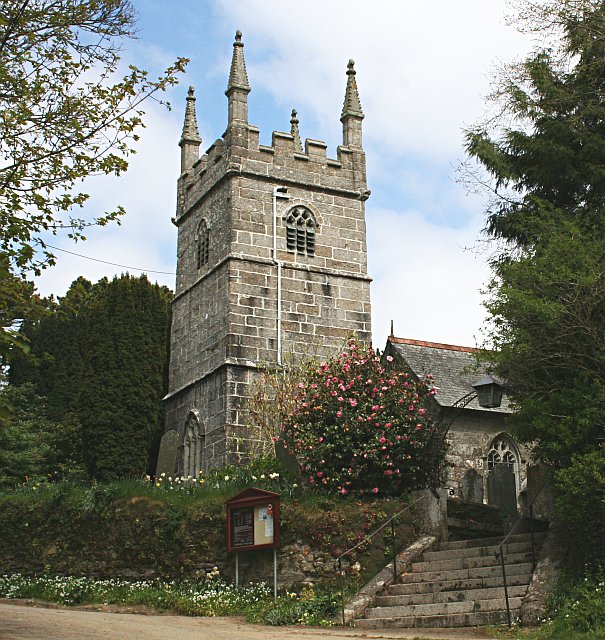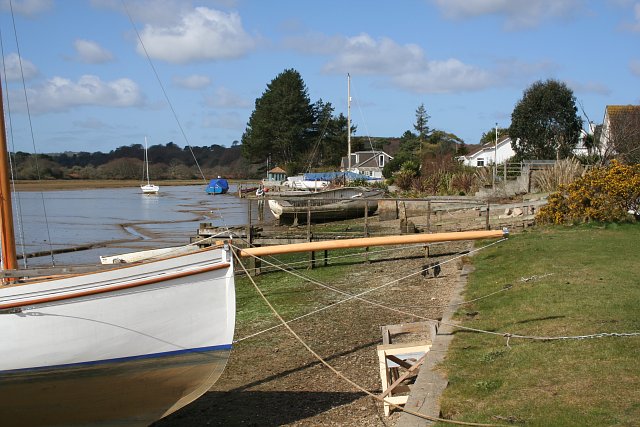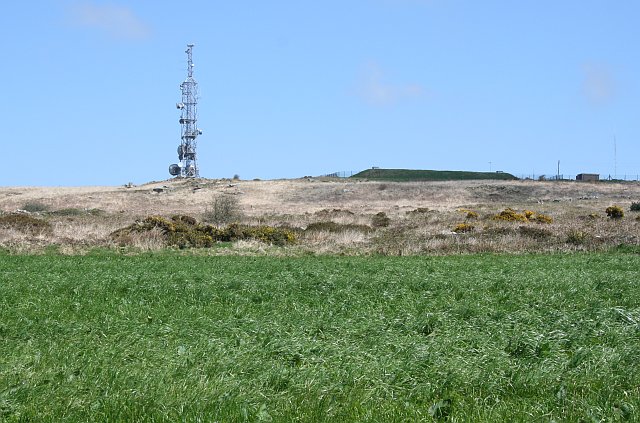|
Perran Foundry
Perranarworthal () is a civil parishes in England, civil parish and village in Cornwall, England, United Kingdom. The village is about four miles (6.5 km) northwest of Falmouth, Cornwall, Falmouth and five miles (8 km) southwest of Truro. The parish population at the 2011 census was 1,496. Perran Wharf is the area of the parish beside the River Kennall (a tributary of Restronguet Creek) where there were wharves and a quay. This has been developed into Perran Foundry where there are new homes and working space settled amidst the history of the site. The other settlements in the parish are Perranwell and Perranwell Station. Perranwell railway station is on the Maritime Line. Perranarworthal parish is bordered on the north by Kea, Cornwall, Kea parish, on the east by Restronguet Creek and Mylor, Cornwall, Mylor parish, on the south by St Gluvias and Stithians parishes and on the west by Gwennap parish. History The name derives from the Manor of Arworthal which has ... [...More Info...] [...Related Items...] OR: [Wikipedia] [Google] [Baidu] |
Gwennap
Gwennap () is a village and civil parish in Cornwall, England, United Kingdom. It is about five miles (8 km) southeast of Redruth. Hamlets of Burncoose, Comford, Coombe, Gwennap, Coombe, Crofthandy, Cusgarne, Fernsplatt, Frogpool, Hick's Mill, Tresamble and United Downs lie in the parish, as does Little Beside country house. In the 18th and early 19th centuries Gwennap parish was the Mining in Cornwall#Gwennap.2C Cornwall.27s .22Copper Kingdom.22, richest copper mining district in Cornwall, and was called the "richest square mile in the Old World". It is near the course of the Great County Adit which was constructed to drain mines in the area including several of the local once-famous mines such as Consolidated Mines, Poldice mine and Wheal Busy. Today it forms part of area A6i (the Gwennap Mining District) of the Cornwall and West Devon Mining Landscape World Heritage Site. It lends its name to Gwennap Pit, where John Wesley preached on 18 occasions between 1762 and 1789, ... [...More Info...] [...Related Items...] OR: [Wikipedia] [Google] [Baidu] |
Tullimaar House
Tullimaar House is a mansion just east of Perranarworthal in west Cornwall, England, United Kingdom; it is not visible from the main A39 Falmouth to Truro road, and stands in private grounds. However, the white gate forming the entrance to the property can be seen from the road. History 19th century It was built in 1828 for Benjamin Sampson, born in 1770, who was originally a "bal carpenter" (''i.e.'', carpenter at a mine) and founded the gunpowder works at Kennall Vale. He also held the post of Manager and shareholder in the Perran Foundry, and was an adventurer in Tresavean Mine near Lanner, Cornwall, from which he derived a large fortune. He had Tullimaar built and resided there until his death 12 years later in 1840. He was buried at Gwennap. The house has been home to many distinguished residents or guests including Sarah Parkin widow of Dr Henry Parkin, RN, Inspector-General of Hospitals and Fleets, and illegitimate child of one of the daughters of George III, who sp ... [...More Info...] [...Related Items...] OR: [Wikipedia] [Google] [Baidu] |
Devoran
Devoran () is a village in south Cornwall, England, United Kingdom. It is southwest of Truro at .Ordnance Survey: Landranger map sheet 204 ''Truro & Falmouth'' Formerly an ecclesiastical parish, Devoran is now in the civil parish of Feock, Cornwall, Feock (where the 2011 census population is included). The village is on the northeast bank of the Carnon River at its confluence with Restronguet Creek, a tidal creek which flows into Carrick Roads above Falmouth, Cornwall, Falmouth. Devoran is at the Normal Tidal Limit (NTL) of the creek but until the 20th-century the tidal limit stretched much further up the valley than now.Cornwall Industrial Settlements Initiative; Devoran PDF. Retrieved 8 April 2016 The name ''Devoran'' comes from the Cornish language ''Deveryon'', m ... [...More Info...] [...Related Items...] OR: [Wikipedia] [Google] [Baidu] |
Carnon River
The Carnon River () is a heavily polluted river in Cornwall, England, United Kingdom. It starts in Chacewater. Both Trewedna Water and River Kennall flow into the Carnon before it merges with Tallack's Creek to become Restronguet Creek, which eventually flows into the English Channel at the mouth of Carrick Roads. The Nebra sky disc, a gold-decorated bronze disc found in Germany and dated to the Bronze Age, contains both gold and tin from the Carnon valley. There was also an antler pick discovered, along with some other artefacts in 1790. In 2016, the pick was dated to be from the Early Bronze Age. In 1992, the river was hit by a major pollution incident, when over 45 million litres of contaminated water from the closed Wheal Jane mine was released by the collapse of an adit, colouring the river water red. A treatment works has since been installed at Wheal Jane to intercept the contaminated water and treat it to remove suspended metals and restore a neutral pH. See also ... [...More Info...] [...Related Items...] OR: [Wikipedia] [Google] [Baidu] |
Waterwheel
A water wheel is a machine for converting the kinetic energy of flowing or falling water into useful forms of power, often in a watermill. A water wheel consists of a large wheel (usually constructed from wood or metal), with numerous blades or buckets attached to the outer rim forming the drive mechanism. Water wheels were still in commercial use well into the 20th century, although they are no longer in common use today. Water wheels are used for milling flour in gristmills, grinding wood into pulp for papermaking, hammering wrought iron, machining, ore crushing and pounding fibre for use in the manufacture of cloth. Some water wheels are fed by water from a mill pond, which is formed when a flowing stream is dammed. A channel for the water flowing to or from a water wheel is called a mill race. The race bringing water from the mill pond to the water wheel is a headrace; the one carrying water after it has left the wheel is commonly referred to as a tailrace. Waterwheel ... [...More Info...] [...Related Items...] OR: [Wikipedia] [Google] [Baidu] |
Ponsanooth
Ponsanooth (, meaning "bridge of the goose") is a village and civil parish in Cornwall, England, United Kingdom. It is about four miles southeast of Redruth and two and a half miles northwest of Penryn on the A393 road Redruth to Falmouth road. In 2019 it had an estimated population of 1184. The church of St Michael and All Angels is now part of a larger benefice, sharing a single vicar with Mabe. Also the village has a shop which includes a post office, village hall, primary school and a public house called The Stag Pub. The River Kennall runs nearby: in the 19th century, this river worked a flour mill and a number of gunpowder mills, machinery at a foundry, and a paper mill. The gunpowder mills supplied many of the mines of west Cornwall until 1910, by which time gunpowder had been largely replaced by high explosives. The site of one of the ruined mills is now within a Nature Reserve. Frederick Hamilton Davey the botanist (died 23 September 1915) was born at Ponsanooth and ... [...More Info...] [...Related Items...] OR: [Wikipedia] [Google] [Baidu] |
Hammermill
A hammer mill is a mill whose purpose is to shred or crush aggregate material into smaller pieces by the repeated blows of small hammers. These machines have numerous industrial applications, including: * Ethanol plants (grains) * A farm machine, which mills grain into coarse flour to be fed to livestock * Fluff pulp defiberizing * Fruit juice production * Grinding used shipping pallets for mulch * Milling grain * Livestock, poultry, and aquatic feed production * Sawmills, size reduction of trim scrap and planer shavings into boiler fuel or mulch * Shredding paper * Shredding scrap automobiles (see automotive shredder residue) * Shredding yard and garden waste for composting * Crushing large rocks * In waste management Operation The basic principle is straightforward. A hammer mill is essentially a steel drum containing a vertical or horizontal rotating shaft or drum on which hammers are mounted. The hammers are free to swing on the ends of the cross, or fixed to the cent ... [...More Info...] [...Related Items...] OR: [Wikipedia] [Google] [Baidu] |
Blacksmith
A blacksmith is a metalsmith who creates objects primarily from wrought iron or steel, but sometimes from #Other metals, other metals, by forging the metal, using tools to hammer, bend, and cut (cf. tinsmith). Blacksmiths produce objects such as gates, grilles, railings, light fixtures, furniture, sculpture, tools, agricultural implements, decorative and religious items, cooking utensils, and weapons. There was a historical distinction between the heavy work of the blacksmith and the more delicate operations of a whitesmith, who usually worked in Goldsmith, gold, Silversmith, silver, pewter, or the finishing steps of fine steel. The place where a blacksmith works is variously called a smithy, a forge, or a blacksmith's shop. While there are many professions who work with metal, such as farriers, wheelwrights, and Armourer, armorers, in former times the blacksmith had a general knowledge of how to make and repair many things, from the most complex of weapons and armor to simple ... [...More Info...] [...Related Items...] OR: [Wikipedia] [Google] [Baidu] |
Arthur Tremayne
Arthur Tremayne (15 May 1827 – 14 November 1905) was a Crimean War soldier and Cornish MP, who survived the charge of the Light Brigade, during which his horse was shot from under him. Personal life Arthur Tremayne, born on 15 May 1827, was the son of John Hearle Tremayne (1780–1851), MP, and his wife, Caroline Matilda Lemon, the daughter of Sir William Lemon MP, and the sister of Sir Charles Lemon MP. After Sir Charles Lemon's death on 13 February 1868, he inherited most of his wealth. He married on 22 September 1858, Lady Margaret Frances Hely-Hutchinson, second daughter of Lord Donoughmore. They had the following children: * Arthur Richard (died in infancy), * Francis William (born 6 October 1862) * Caroline Mary (died in infancy), * two other sons, * another daughter, also called Caroline Mary who married Francis Alexander on 31 January 1883 at St George's Church, Hanover Square, London. His first wife died in 1866. In 1870, he remarried to Emma Penelope Phil ... [...More Info...] [...Related Items...] OR: [Wikipedia] [Google] [Baidu] |
Media In Cornwall
The media in Cornwall has a long and distinct history. The county has a wide range of different types and quality of media. History Timeline Background Cornwall's geography, a long, narrowing peninsula, pointing into the Atlantic, made travel by land (Cornwall is only joined to Devon by a short four-mile stretch of land—the River Tamar divides the rest) slow, unreliable and poor. (Crossing the Tamar was by a few ancient stone bridges and two ferries to Plymouth). Selling and distribution of market goods used the sea and major rivers. However, improved telecommunications stimulated growth in the ports of Cornwall and the exchange of goods, particularly of mining products, like copper and tin. It also led to previously unexplored markets being discovered, for example arsenic, a by-product of tin production, was exported to the US, where it was used in the production of pesticides in the cotton fields. Before the arrival of mass media in Cornwall and telegraphy, since 1688, F ... [...More Info...] [...Related Items...] OR: [Wikipedia] [Google] [Baidu] |
Guano
Guano (Spanish from ) is the accumulated excrement of seabirds or bats. Guano is a highly effective fertiliser due to the high content of nitrogen, phosphate, and potassium, all key nutrients essential for plant growth. Guano was also, to a lesser extent, sought for the production of gunpowder and other explosive materials. The 19th-century seabird guano trade played a pivotal role in the development of modern Intensive farming, input-intensive farming. The demand for guano spurred the human colonisation of remote bird islands in many parts of the world. Unsustainable seabird guano mining processes can result in permanent habitat destruction and the loss of millions of seabirds. Bat guano is found in caves throughout the world. Many cave ecosystems are wholly dependent on bats to provide nutrients via their guano which supports bacteria, Fungus, fungi, invertebrates, and vertebrates. The loss of bats from a cave can result in the extinction of species that rely on their guano ... [...More Info...] [...Related Items...] OR: [Wikipedia] [Google] [Baidu] |






